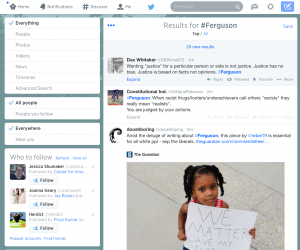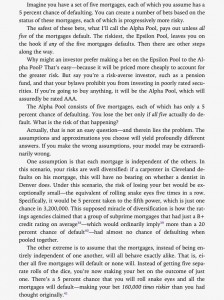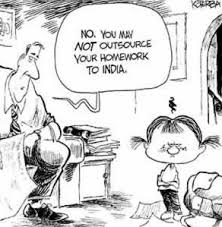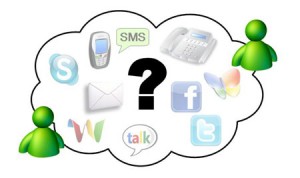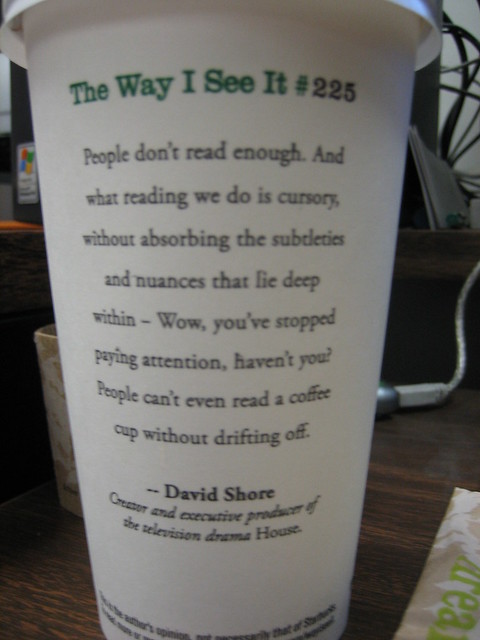The transition from print to social media has drastically changed the role of the content creator and his/her duty in conveying an efficient yet thorough message to an audience. The pressures of detailing a message with complex vernacular and thorough completeness has seemingly shifted to short definitive statements and highlighting of important material. How do creators adapt to creating effective messages with minimal clutter?
Before the evolution of social media and technology, print media was the most reliable mode of communication for individuals and businesses alike. Although considered “outdated” and/or “boring” today, taking the time to read and understand a body of text allows the reader to become more engaged and understand the situation clearer. According to the article “Print is Dead? Not so Fast”, on Forbes.com, the author states several reasons why print media is still relevant today. However, although a majority of the reasons given are debatable, one solid point states “consumers are more engaged when reading printed material, unlike websites, which are often skimmed in as little as a 15– second visit.” From this statement, it is possible to assume that since people were forced to read completely through texts during this time period, they possessed a higher level of literacy then many individuals do today.
Nonetheless, times have changed and technology and social media has evolved into the leading mode of communication in our modern society. According to the article on Forbes.com, technology such as the internet allows for “cost effectiveness, exposure potential and convenience,” when it comes to marketing and advertising. But what does this mean for the content creators and audience? Should readers be responsible for longer content or do creators ignore certain rhetorical aspects to accommodate all levels of literacy? In my opinion, a mixture of both is necessary.
The incessant bombarding of multimedia messages through social media has led to a new mentality of faster is better when it comes to communication. Social media outlets, such as Twitter and Facebook, allow users to access and view information at the click of a button or touch screen. Instant deals, news, and/or other relevant information are available quickly and typically, in the palm of your hand. There is no long text to read or pages to sift through. The hashtag aspect popular on Twitter is significant because it helps spread messages and awareness in rapid time and/or allows people to get up-to-date with the current information surrounding a topic. According to an article by Jenny Doren and Laura Mandaro on the USA Today website, the recent Ferguson, MO decision sparked almost immediate protests across the nation, partly due to such hashtags as “#fergusondecision”, “#blacklivesmatter”, and “#justiceforMikeBrown”. People immediately became aware of the decision and reactions simply by clicking on these tags.
The work my father does as a proposal writer illustrates another example of completing efficient technical communication. When dealing with more intricate and complex topics, longer text usually is necessary, but finding ways to limit the wordiness allow these texts to still be interesting and engaging.
Image A Image B
Image A above is an example of technical communication that could be improved. It conveys a message through text but could potentially be more effective if broken down more and utilizes other multimodal aspects. Image B is an example of technical communication that is more effective today. Understanding and executing ways of sequencing concepts in longer texts will allow the audience to be more interested and engaged. Combining text with images, including graphs and tables, gives the work more flair and activity. Concepts and ideas are broken down more so most people can better understand and comprehend the message.
Overall, this new era relies on quick yet efficient communication. Long texts will always have a place, but it is up to the creator to find ways of making it engaging while maintaining the message it contains. However, it is also up to the audience to be educated and should he/she wish to explore new endeavors, be responsible for taking the time to learn the ways.
Sources:
Jenny Doren, WFAA-Texas | Laura M, and Aro. “Ferguson Tweets, Hashtags Spike as Anger Rises.” USA Today. Gannett, 26 Nov. 2014. Web. 08 Dec. 2014.
“Print Is Dead? Not so Fast.” Forbes. Forbes Magazine, 28 June 2012. Web. 07 Dec. 2014.
